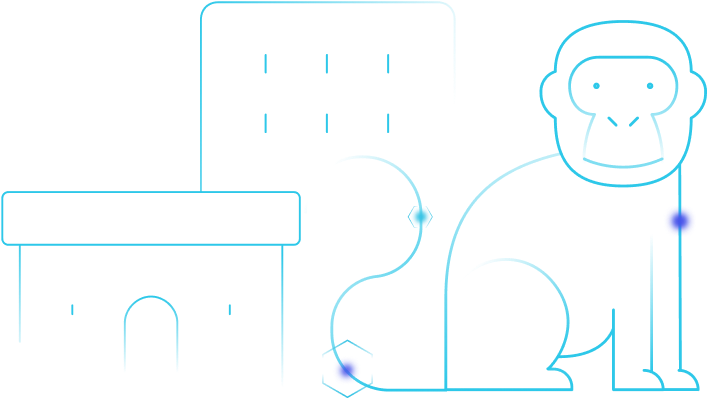Unraveling the science of drug effect
Pharmacodynamics (PD) Studies
Overview
Understanding
Pharmacodynamics
Pharmacodynamics (PD) plays a pivotal role in understanding the intricate mechanisms through which drugs exert their effects on the human body.
By bridging biochemistry and physiology, PD investigates the dynamic relationship between drug concentration and its therapeutic or adverse outcomes.

Drug-Target Interactions
- Mechanism of Action: PD examines how drugs bind to receptors, enzymes, and ion channels.
- Therapeutic Effects: Interactions may stimulate or inhibit target functions to achieve desired outcomes.
- Potential Side Effects: Unintended interactions can lead to adverse effects, requiring careful evaluation.
Dose-Response Relationship
- Effect Variation: Describes how drug effects change with different doses.
- Dose-Response Curve: Graphically represents the relationship between dose and effect.
- Therapeutic Window: Helps determine the optimal dose for efficacy while minimizing side effects.
Potency and Efficacy
- Potency: The amount of a drug needed to achieve the desired effect.
- Efficacy: The maximum effect a drug can achieve, regardless of dose.
Pharmacodynamics Capabilities
Leading animal facilities for preclinical studies
Operatating world-class animal facilities to support diverse preclinical research

Facility Overview
61 NHP rooms: Capacity for 2,260 non-human primates
62 dog rooms: Housing 1,720 dogs
14 rabbit rooms: Capacity for 520 rabbits
66 rodent rooms: Accommodating 16,000 rodents
10 mini-pig rooms: Space for 200 mini-pigs
27 dedicated PD rodent rooms: Capacity for 8,100 rodents
These facilities enable us to deliver reliable, high-quality research data tailored to client needs.
Extensive range of disease models ensures precision in pharmacodynamic studies

Disease Model Portfolio
396 tumor models:
- 186 Xenografts
- 30 Humanized Models
- 30 Syngeneic Models
- 50 Orthotopic Models
- 100 Patient-Derived Xenografts (PDX)
240+ non-tumor disease models:
- 64 CNS Disorders (direct to the disease model page)
- 32 Inflammation & Immune System Models
- 25 Cardiovascular Diseases
- 18 Digestive System Disease Models
- 10 Ocular Disease Models
- 39 Endocrine & Metabolic Disease Models
- 52 Other Disease Models
Robust platforms for evaluating novel therapeutic modalities

Research Platforms
- Nucleic Acid Drug Efficacy Evaluation
- Cellular Immunotherapies PD Studies
- PROTAC-POI Efficacy Testing
- ADC Pharmacodynamic Evaluation
- Advanced Tumor Model PD Studies
Pharmacodynamics Integration
Integrated preclinical research platform
Medicilon’s pharmacodynamics services integrate seamlessly with our preclinical research platform, ensuring smooth drug development. From IND applications to complex efficacy studies, our solutions are designed for speed and success.

Seamless integration
Efficiency in drug development
End-to-end solutions
Why Choose
Medicilon for
Pharmacodynamics?
Expertise & Innovation
Medicilon combines decades of scientific expertise with advanced technologies to deliver reliable and accurate results.
Tailored Research Solutions
Our customized pharmacodynamics studies cater to your specific research requirements, ensuring precise and actionable outcomes.
Comprehensive Support
From discovery to IND filing, Medicilon offers holistic solutions that accelerate your drug development timeline.
Reliable Data & Results
With meticulous attention to quality, we deliver high-confidence data that drives informed decision-making in drug development.
our mission
Driving innovation in drug development
Transforming drug development
Optimizing and accelerating the drug development process for greater efficiency
Enhancing patient outcomes
Our innovative research leads to more effective and timely therapies
Bringing therapies to market faster
We use expertise and advance technology to streamline drug approvals
Innovating for better therapies
Frequently Asked Questions
Have questions about Pharmacodynamics studies?

Why is pharmacodynamics important in drug development?
Understanding pharmacodynamics helps optimize drug dosage, minimize side effects, and ensure maximum therapeutic efficacy.
What are the key components of pharmacodynamics?
Key components include drug-target interactions, dose-response relationships, potency, and efficacy.
What disease models does Medicilon offer for PD studies?
Medicilon provides 400+ tumor models and over 240 non-tumor disease models, covering a wide array of conditions such as CNS disorders and cardiovascular diseases.
Ready to harness Medicilon’s expertise in pharmacodynamics?
Contact us today to discuss how our tailored PD services can support and advance your drug development goals.
